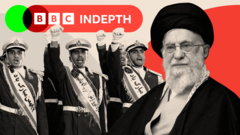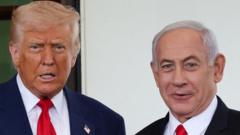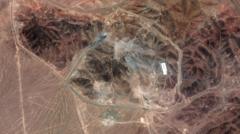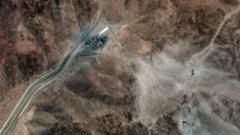Following two weeks of conflict and a fragile ceasefire, Iran's Supreme Leader, Ayatollah Ali Khamenei, faces potential unrest and dissatisfaction within his country. The war with Israel has left Iran's military weakened and spurred murmurs of dissent among officials. As Khamenei emerges from hiding, he must navigate a drastically changed political landscape amid calls for leadership change, all while contending with the precariousness of Iran's future.**
A Nation Transformed: Iran's Supreme Leader Faces Unprecedented Challenges Post-War**

A Nation Transformed: Iran's Supreme Leader Faces Unprecedented Challenges Post-War**
After weeks in hiding, Ayatollah Ali Khamenei must confront a fractured and discontented nation grappling with the aftermath of war.**
In a dramatic twist to Iran's political landscape, Ayatollah Ali Khamenei, who has been absent from public view for nearly two weeks in a concealed bunker amid the ongoing war with Israel, now stands on the brink of an uncertain post-conflict reality. As a fragile ceasefire emerges, many are wondering if the 86-year-old Supreme Leader will seize the opportunity to reestablish contact with the Iranian populace.
His prolonged retreat is believed to be rooted in fears of assassination, particularly with the Israeli government having not discounted the possibility. As he prepares to resurface into an altered nation, Khamenei will likely deliver a victory narrative via state media, yet the stark realities awaiting him suggest a much more complicated picture.
The war has inflicted profound damage on Iran's military and infrastructure, with Israeli forces quickly asserting dominance in the region. Reports indicate that key figures within Iran's military establishment have suffered fatal blows, and the nation's military capabilities have been substantially undermined. With the Iranian economy already beleaguered by sanctions, public sentiment is turning against Khamenei, who has held power since 1989 and advocated for policies leading to the current conflict.
Experts note a widespread belief that Khamenei bears responsibility for the turmoil resulting from his geopolitical pursuits - particularly the antagonistic stance taken against Israel and the US. The historical pressures of sanctions have propelled significant internal dissatisfaction as many citizens watch their nation descend into chaos. As Professor Lina Khatib remarks, this may mark the premature end of Khamenei's tenure as the head of the Islamic Republic.
In the backdrop of this turmoil, there are rumors of dissent among the country's leadership. Some former regime figures have begun to engage with the influential clerics of Qom, suggesting a push for a transition in leadership amidst rising tensions.
While some Iranians felt a sense of solidarity during the bombings—supporting each other in a show of unity against the regime—there remains a profound desire for a change in governance. Many are cautious, however, wary of the potential chaos that could follow the fall of the current regime, especially when opposition remains disjointed and ineffective.
As reports of regime-affiliated executions proliferate, fear prevails that the government may resort to increased oppression in response to its diminishing power. Experts maintain that, despite the precariousness of the current regime, it will resist calls for reform or relinquishment of control.
On the military front, despite significant losses, Iran's ballistic missile assets appear largely intact, posing ongoing strategic challenges for both Israel and the international community. In addition, the recent war has worsened the state of Iran's nuclear facilities, sparking concerns regarding its potential nuclear aspirations.
As Khamenei contemplates his next move amidst intensifying internal and external pressures, he must address the need for a solidified leadership transition strategy—one that could either maintain a semblance of control or enable the establishment of a new power dynamic. The coming weeks will prove critical as Iran navigates the aftermath of its latest conflict and the shifting tides of its turbulent political landscape.





















